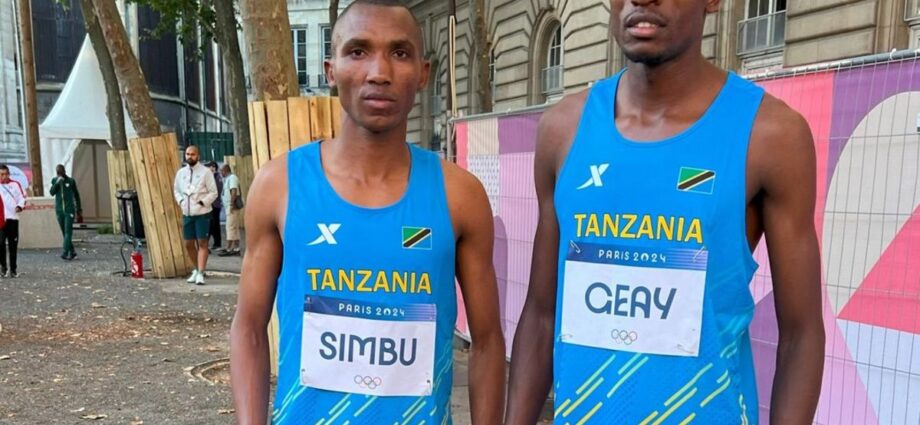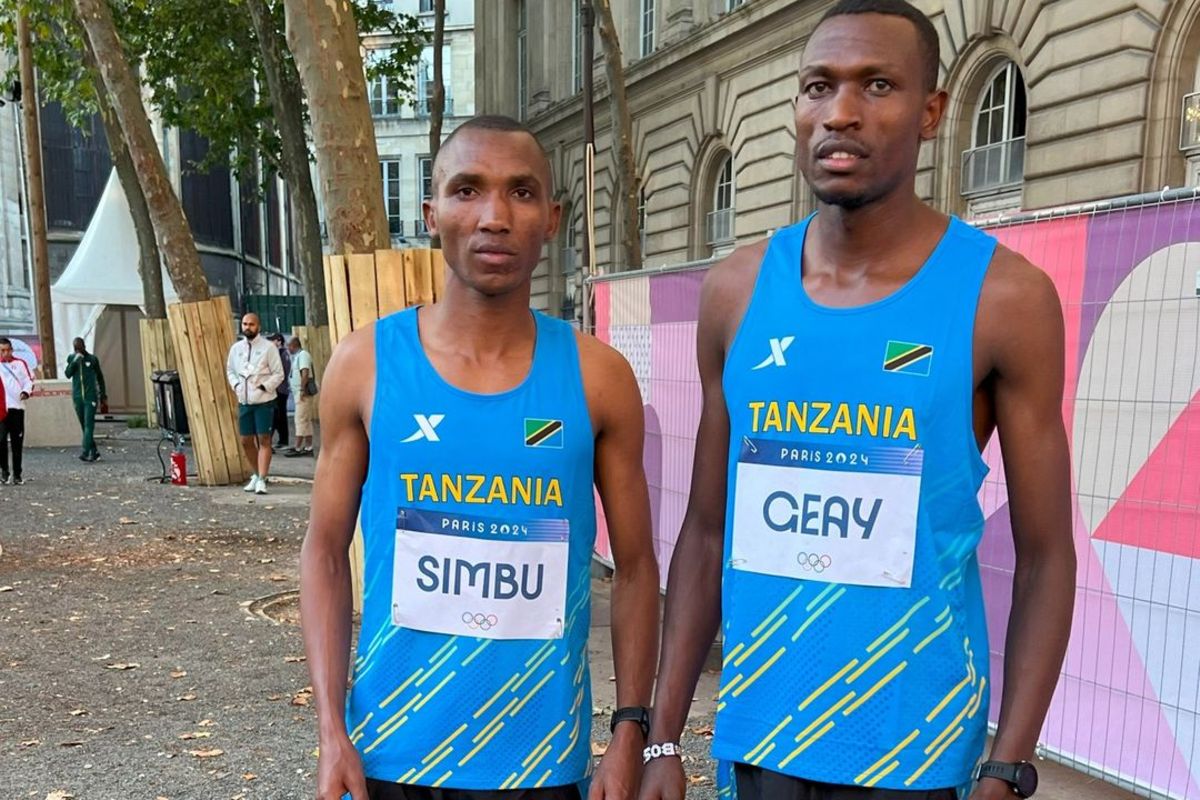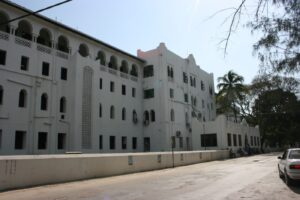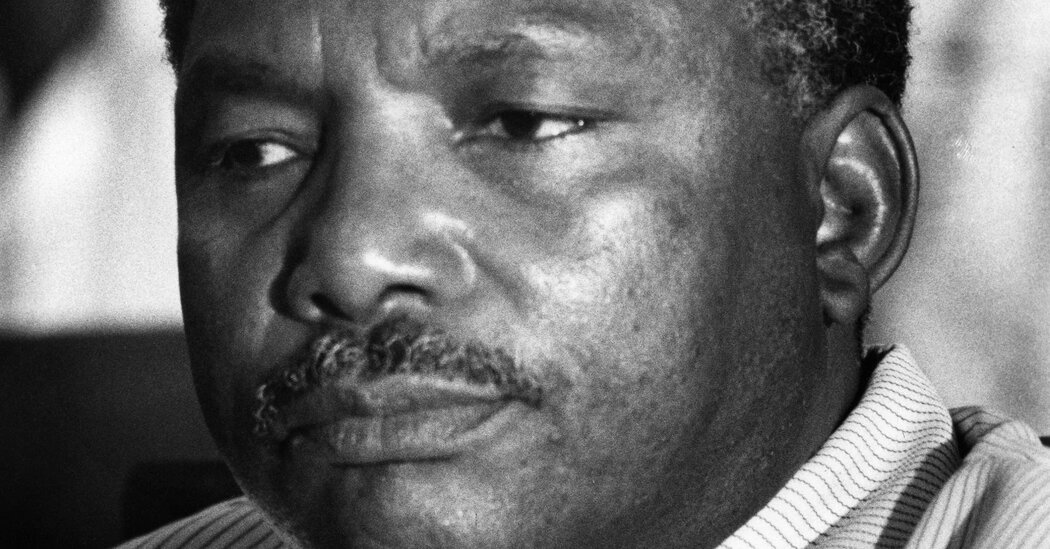The victory of a gold medal in the 1974 Commonwealth Games in Christchurch, New Zealand, accompanied by a world record, placed Filbert Bayi at the top of the list of the world’s best athletes, significantly raising Tanzania’s profile.
I recall one occasion when I accompanied the squad of Simba Sports Club to Nigeria, and as soon as we arrived at the hotel, the attendant asked us, “Are you from Filbert Bayi’s country?” This was after we mentioned we were from Tanzania. This was a real testament to the power and influence of sports.
Bayi became a true sports star, amassing medals and awards from all the corners of the globe. In 1975, he won and set a new world record in the mile run in Kingston, Jamaica, and that same year, he was named the best athlete in Africa at a major sports festival held in Brazzaville, Congo.
Then came 1976, the year of the Olympic Games held in Montreal, Canada. Although the Olympics is a gathering of the world’s best athletes from various sports, the 1976 Games were early dubbed the “rematch round” between Filbert Bayi and his fierce rival, John Walker of New Zealand, in the 1,500 metres race. We were all waiting to see what would happen.
This situation was well understood and taken seriously by the government. Strategies, plans, and extensive preparations were made not only for Bayi, but also for the entire Tanzanian team that would compete in Montreal.
With this in mind, it was clear that the government recognised the weight and great benefits the nation could gain from our athletes’ victories in major international events like the Olympics.
On the other hand, this period in the 1970s and 1980s was a time of intense and significant liberation movements in southern Africa, especially the efforts to free the late Nelson Mandela and end apartheid in South Africa.
Tanzania was at the forefront of the struggles. There were even times when the issue of sports cooperation with South Africa caused significant controversy in international forums. Similarly, signs were emerging of a strong push to prevent countries that had sports ties with South Africa from competing in the Montreal Games.
While this tension was intensifying, preparations for our team were rapidly advancing at home. Once again, I was among the journalists selected to report on these Games, and all of us on this trip had our expenses fully covered by the government, from travel attire, suits, shoes, and other official uniforms to suitcases and bags. In general, we felt well-prepared and ready for the Montreal Games in Canada. The journey was set.
However, as time quickly passed, one morning around 9am, I received a call from the Director of Information at the State House, Sam Mdee. In an unusual tone, Mdee told me to wait for a special government announcement that would be made right after the Cabinet meeting chaired by then President Mwalimu Julius Nyerere.
Since Mdee told me this as the producer of the daily sports programme that aired at 1:45pm, it was clear that the announcement would be related to sports, and I suspected it might involve the Olympics.
That day, the hours seemed to crawl by as I eagerly awaited Sam Mdee’s call. It didn’t come neither at 2pm nor at 3pm. Finally, around 4pm, I decided to call Mdee myself, and I was quite anxious. He told me the meeting was still ongoing.
It was around 7:30pm when Sam Mdee’s call came through, and he told me, “Tido, the Cabinet meeting just ended, and they have decided that Tanzania will not compete in this year’s Olympic Games in Montreal because the International Olympic Committee (IOC) rejected the proposal to exclude countries with sports ties to the apartheid government of South Africa.” I was shocked.
A few minutes later, I announced this news on my sports programme, trembling as I did so, but the world heard it, and soon, this became a major story worldwide.
That night, I couldn’t sleep, pondering the meaning of this decision that left us with just suits, shoes, and Olympic memorabilia suitcases. I knew there was nothing more to do—the dream was shattered.
I arrived at the Radio Tanzania Dar es Salaam (RTD) office on Pugu Road early the next morning, but suddenly I received a call from the State House, telling me to wait. Then I heard Mwalimu Nyerere’s voice on the line, and I thought, “Oh my God, what now?”
I greeted him, and he quickly asked me, “Tido, how do you think our decision to withdraw from the Olympics was received by sports fans in the country?” I replied that, generally, Tanzanians had no doubt about his decisions because he often made them in the best interests of the nation.
He told me that, given the current situation, it was difficult to separate sports from international diplomatic politics. He added that they had discussed the matter extensively, but there was no other way but to make that difficult decision.
However, he said he was pleased that two African leaders had already called him immediately after hearing about his decision, telling him that they would also withdraw. Overall, later, many African countries announced their support for Tanzania’s decision by not sending their teams to Montreal. It was a significant diplomatic victory for Tanzania.
Unfortunately, the eagerly awaited rematch between Bayi and Walker in the 1,500 metres was cancelled. Walker won easily.
I must also admit that I never expected to receive a call from Mwalimu Nyerere, and that day, I was terrified. It took me a while to calm down during our conversation.
Fortunately, this was the beginning of several other opportunities for me to communicate with Mwalimu, especially after he stepped down from the presidency.
I remember one time while I was at the BBC in London, I received a call from Mwalimu’s aide, Ambassador Charles Sanga, who told me that Mwalimu wanted to see me at the hotel where he was staying in the city. I went, and we talked about many things, just between the two of us, mainly about what was happening in the world at that time.
However, during one of the conversations, he mentioned, as an example, his decision regarding the 1976 Montreal Olympics. I was surprised by his memory. He said he did not regret it and was pleased with its later outcomes.
After missing the 1976 Montreal Olympics, there was nothing significant until 1978, when the African Games and the Commonwealth Games were scheduled to take place again, starting with the African Games in Algiers, Algeria, and later the Commonwealth Games in Edmonton, Canada, with Tanzania fully represented but mostly by the same athletes. I was also fortunate to go to both Algiers and Edmonton.
As usual, the well-established reputation of Tanzanian athletes was evident everywhere, and they were both feared and respected. One thing that many Tanzanian athletes had during those days was the Great Spirit and determination to fight on the field, coupled with confidence. This was due to the solid preparations they underwent.
For example, at the Edmonton Games, Filbert Bayi, to the surprise of many, was defeated in the 1,500 metres race by an unknown British runner, David Morecraft. But as we wondered what had happened, suddenly the Tanzanian camp was surprised by a significant and unexpected victory.
According to the marathon regulations, a runner is advised not to feature in another marathon until three months after running the previous one.
Now, as I mentioned, the Tanzanian team that competed in the African Games was the same one that went to the Commonwealth Games. Unfortunately, our marathon runners did not perform well in Algiers, and according to the rules I mentioned earlier, we did not have a marathon team in Edmonton.
In general, after Bayi’s defeat, although he won a silver medal, the Tanzanian camp was completely disheartened. Now, in the Canadian Games, the marathon race was scheduled to be the very last one.
To the surprise of many, one of our marathon runners who competed in Algiers, Gidamis Shahanga, insisted on competing, contrary to the established rules.
After discussions, he was finally allowed, although most of us thought he was just going to enjoy himself. Personally, I decided to ignore the race and return to my hotel to prepare my report early. Luckily, there was a television in my room, even though Tanzania didn’t have any at the time.
Suddenly, I heard the announcer excitedly mentioning Shahanga’s name, saying that he was already overtaking the leading runner, still full of energy, with a short distance remaining. I was stunned; the hotel where I was staying was far from the stadium.
I had no choice but to record the voice of that English-language television announcer until Shahanga finished first, surprising many of us.
But that was the hallmark of Tanzanian athletes in all sports during the 70s and 80s—fighting to the last drop. Perhaps to illustrate this further, let me give another famous example, well-known to many sports enthusiasts in the country, as it concerns a major club, but I will tell the story as I witnessed it.
It was 1979, and I was the announcer for the first leg of the African Champions Cup match at the National Stadium in Dar es Salaam (Now Uhuru Stadium) between Simba and Mufulira Wanderers of Zambia.
The result was a humiliating 4-0 defeat to Simba in front of their fans. What a shame! No one wanted to think about the return leg in Lusaka two weeks later. It was said that even Simba’s management didn’t want to send the team because they feared being trapped by the tournament’s strict rules. They decided to send the team on the Tazara train. The only people who had hope for at least a small win were the players and their coach, Joel Bendera.
It was a team composed solely of young Tanzanians, with no foreign players. As a sports programme broadcaster, I was among the very few who went to the Tazara Station to see the Simba team off.
There wasn’t a single journalist in the delegation, and Radio Tanzania did not make arrangements to broadcast the match live.
As usual, following the playful rivalry between the traditional rivals, people at Radio Tanzania were also teasing each other a lot.
So, on the day of the match, which was a Saturday, the Director of Information at that time, Sam Mdee, who had been transferred from the State House and was a die-hard Yanga fan, called me. He told me that since we were not broadcasting the match live, I should follow it in my own way. He instructed me to interrupt the regular programming to announce each goal as soon as it happened.
I expected to get match updates from the newsroom at Radio Zambia in Lusaka. I was late in getting a phone line, but about 20 minutes after the game started, a Radio Zambia reporter informed me that Simba were already leading 2-0.
I told him not to joke around, but he assured me it was true. I then went on air to announce it, and many Tanzanians didn’t believe it. Even Mdee himself called me, and I confirmed it was true.
I called again shortly after the halftime whistle, and my colleagues informed me that it was halftime, but Simba were leading 3-0. Even I couldn’t believe it, but I went ahead and announced it. The city of Dar started buzzing.
I waited about 15 minutes after the second half began, and to my great surprise, I was told that Simba had scored a fourth goal—this was unbelievable.
I went on air to announce it. Many calls started coming in; no one could believe it. Simba scoring all those goals against Mufulira, on a pitch in Lusaka, in front of their leader, President Kenneth Kaunda, after that team had embarrassed them in Dar? It was incredible.
I waited until there were about 10 minutes left in the match and asked again. This time, I was told that Simba had already scored a fifth goal—Simba 5, Mufulira Wanderers 0. History was made. Cheers and shouts of joy were heard. Simba were advancing in the African competitions.
No one believed it until that team of young Tanzanians returned home and told the whole story. Thousands of fans flooded Tazara this time to welcome the heroes.
It has now been 45 years since this record was set, and it has not been broken by any other club in Africa.
I have tried as much as possible in these articles to describe the great achievements brought by our athletes and the great reputation they gave Tanzania in the 70s and 80s by winning major international games with great courage.
The situation is very different now. How is it that these days we appear weak in many sports and even lose to our neighbours, whom we used to boast about defeating? We must seriously reflect and not just make excuses.
Are we right to focus so much on one sport and neglect others? And even in that one sport, football, why do we seem to support foreign players more? Are we doing the right thing when sports are becoming a significant source of employment for young people in many countries worldwide?
Without a doubt, based on the evidence of our past successes in sports, Tanzanian youths have great talent and can once again proudly compete among other young people in the world in various sports.
What is needed is the presence of plans, strategies, and a genuine commitment to achieve reliable success; otherwise, as was the case in this year’s Olympic Games in Paris, France, we will continue to reap what we sow.
Tido Mhando is best known for his leadership roles at BBC, TBC, MCL, and Azam Media Ltd. However, before reaching those positions, he was a DJ and a sports broadcaster, traveling to many countries around the world with Tanzanian athletes.
In these two Olympic articles, “We reap what we sow,” Tido analyses the core reasons behind Tanzania’s continued failures in the Olympic Games.















